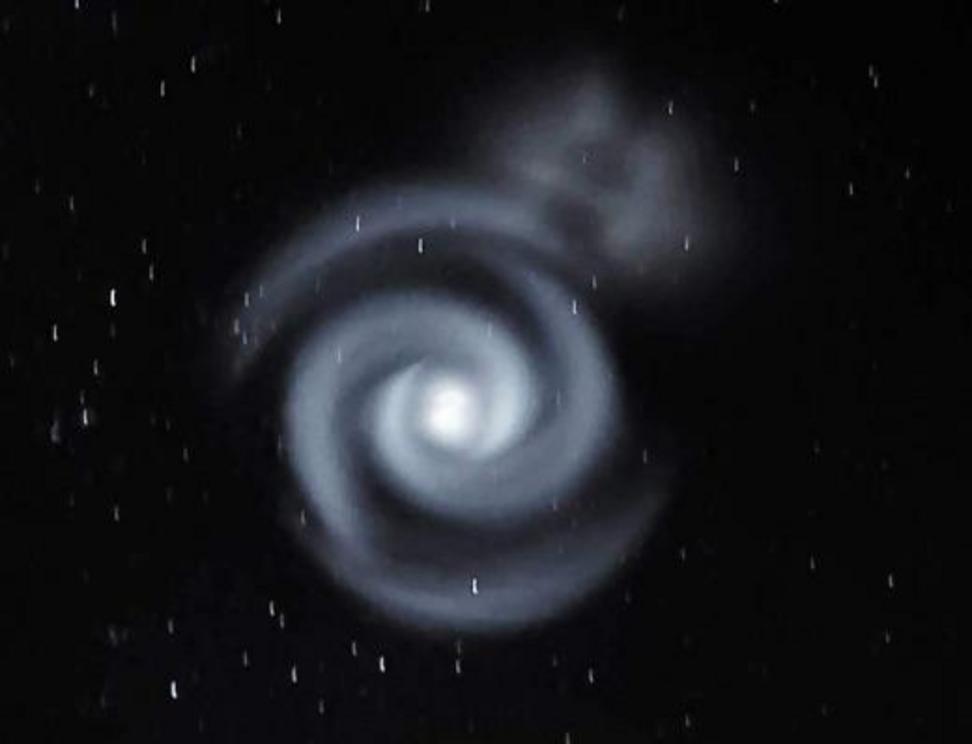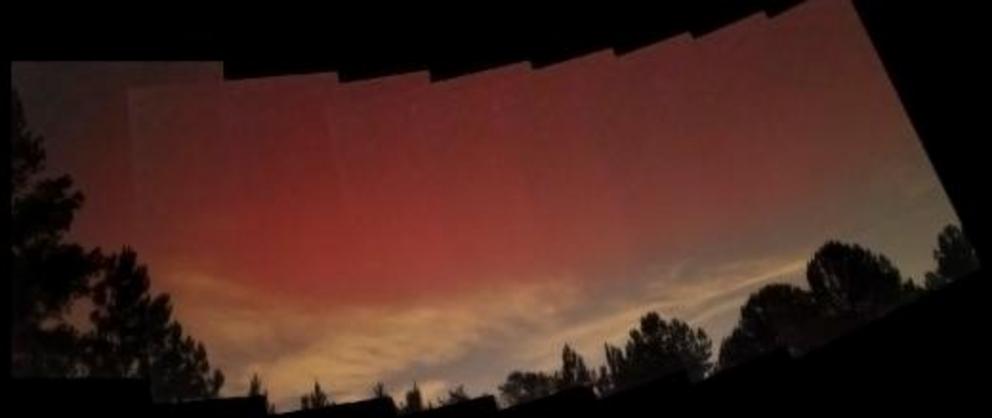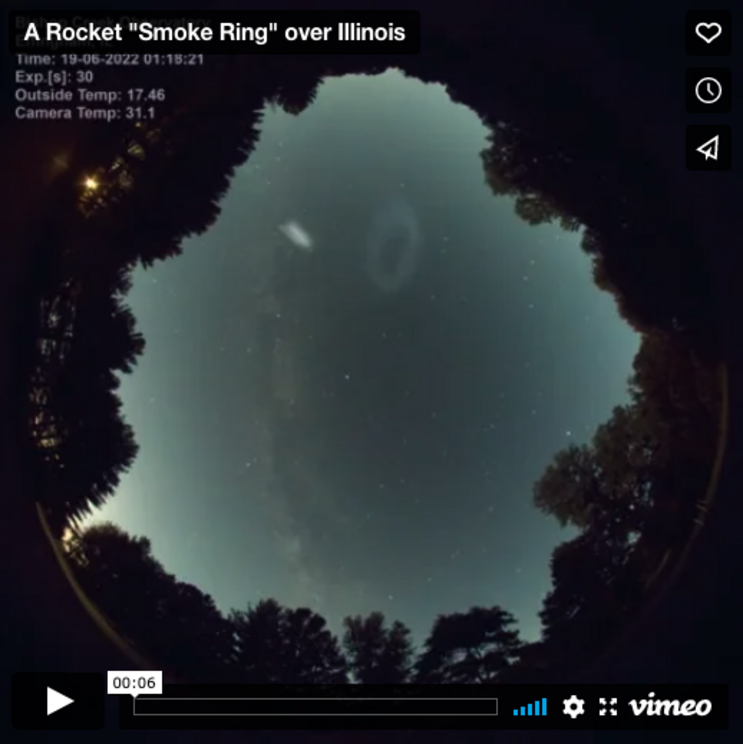Strange things in the sky, courtesy of SpaceX
On Sunday morning, June 19th, SpaceX launched a Falcon 9 rocket from Cape Canaveral (0427 UT) carrying a Globalstar communications satellite. Within hours, people around the world started seeing strange things in the sky. First came the "smoke ring." Jerrod Wood video recorded it from central Illinois:
"I believe it shows the orbital insertion of the Globalstar FM15 satellite," says Wood.
He's right. Almost two hours after launch, the upper stage of the Falcon 9 rocket deployed the Globalstar satellite; the smoke ring Wood saw was the "puff" of separation. At the time, the rocket was more than 1100 km high, so people were able to see it across much of North America. Check out these images: from Arizona, Missouri, and California.
An hour after the smoke ring, things got really strange. Sky watchers in New Zealand saw this:

"It looked like a beautiful galaxy," says photographer Alasdair Burns of Twinkle Dark Sky Tours on Stewart Island. "It was a very slowly rotating spiral that started small and gradually expanded. Eventually it became so large and faint that it could no longer be seen. There were a group of us on our balcony watching it and none of us had ever seen anything like it."
This spiral was caused by the Falcon 9's upper stage venting leftover fuel just before deorbiting into the Pacific Ocean. The upper stage was probably spinning on its longest axis to stabilize flight orientation--hence the spiral shape. Similar spirals have been seen after previous Falcon 9 launches.
Finally, David Cortner of Rutherford College, North Carolina, saw something truly head-scratching. He calls it a "rocket powered aurora." This 8-frame mosaic shows a red band that appeared approximately 11 minutes after the Falcon 9's liftoff from Cape Canaveral:

"I went out to watch the midnight launch," says Cortner. "Here in western North Carolina, I was hoping for a faint, moonlit 'jellyfish'--the kind of display we see after many SpaceX launches." But that's not what happened.
"The rocket's trajectory was much higher than I expected," he continues. "It was almost 500 km high by the time it was due east of me, not 150-200 km like most SpaceX flights up the Atlantic coast. As a result, the rocket passed by unseen."
"Instead, I noticed this red glow spreading along the flight path a minute or two after the rocket's closest approach," he says. "It looked like the aurora borealis."
Could it have been auroras? Probably not. Low-latitude red auroras typically appear only during strong geomagnetic storms. At the time of the photo, however, global geomagnetic activity was low (Kp=3); there was no space weather event in progress.
There has been much discussion on the web about a covert payload hitchiking on this Falcon 9 rocket. Analysts believe that a clandestine satellite may have been released about 10.5 minutes after launch. This is strikingly similar to the time Cortner witnessed the red glow over North Carolina. Moreover, a photographer in Ohio may have witnessed the same thing.
We still do not know what produced this glow. Readers with good ideas are encouraged to share them.

